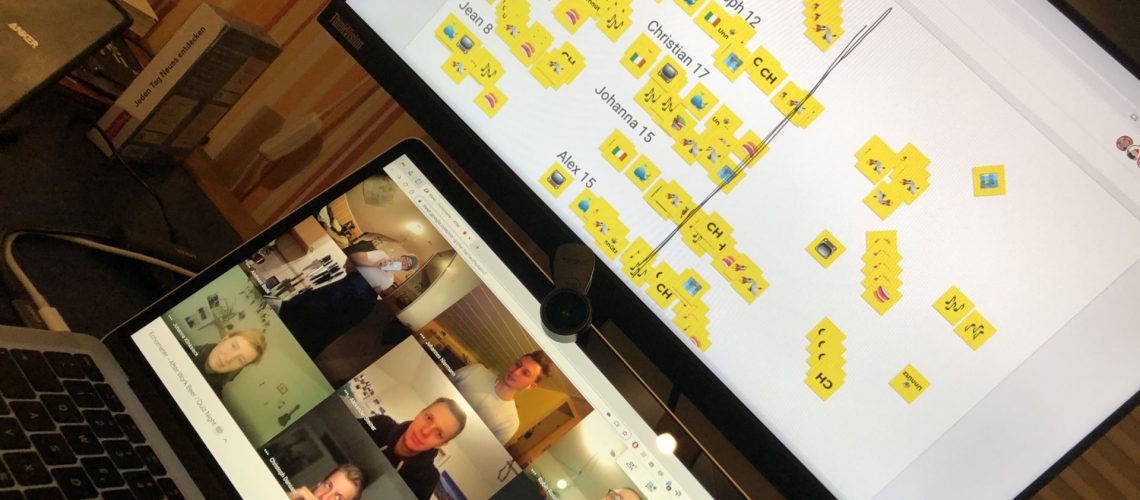Building a globally competing startup requires hiring across borders
Building a company is hard. For startups in early stages the main focus is product-market-fit and generating early traction. Once you're in a position to accelerate your growth, you'll face the next challenge which is building a scalable company with employees and processes around your product.
In 2021, we at Echometer reached this phase. We are now screening the market thoroughly to find the right talent to join our team. Everyone who is interested in startups should have heard about the "Bozo Explosion" by Guy Kawasaki. Basically it says: If you hire B players, they'll hire C players and in a year you'll find yourself surrounded with Z players. That's obviously something every founder should want to avoid.
We deeply believe that we can only compete in a global B2B SaaS market, if we're able to attract the best talent. And the "best talent" is in most cases not to be found right next door.
Therefore, we aim to build a company that is remote-first.
What does “remote-first” mean?
Many companies moved from "no home office" to "partly home office" and called it "remote-friendly" (see a general definition right here). When we researched remote-first pioneers like GitLab (the biggest remote company of the planet) or Doist, we found that just being "remote-friendly" – by allowing to work remotely – is dangerous.
Only allowing team members to work from somewhere else (while everything else remains the same) is not a good operating mode. Still, Corona forced many companies to do so. The rushed transition is probably the reason why many claim "remote working is not working for us".
If your company wants to go remote, you have to be consistent about it. And that entails a (partly) drastic change in the ways of working for all your employees – also those who keep working on-site.
"Remote-first", as defined by for example VMWare, therefore refers to changing all aspects of work for remote working. This entails changing internal communication, decision-making, team building and sometimes also compensation.
Why remote-friendly is not enough
You might ask: "But wait, what's wrong with being remote-friendly? Do you really have to go all in to make remote work actually work?"
We believe so. Don't get me wrong, we know that working in the same space has its advantages: As our founding team was working and living together in one flat in the beginning, we know about the benefits of working on-site: Quick communication, informal team building etc.
But those advantages are also part of the problem why "remote-friendly" doesn't work. If you don't adapt your practices, you'll create a two-class system: The employees on-site have access to certain information earlier, are better integrated into the team and are more involved into decision-making. In those situations, it's really tough for remote workers to keep up and become part of the team.
What can you do to make remote work work?
Well, it's easier of course if you just go remote-only. Our friends at Frontastic, another Münster-based start-up, did that and call it "Remote Native" . For us at Echometer this route seemed too extreme as we still love the idea of building a HQ office. This leaves us with the same challenge that most corporates have: How can you transition from on-site to partly-remote without disadvantaging fully remote employees?
The answer is: Both remote workers and on-site workers need to adapt. While working remotely during Covid in 2020, we identified the following rules to be invaluable to make the split work:
- Document everything
This may sound aggressive at first, but once your team has a well-defined documentation structure, it will feel quite normal. The benefit is enormous: If all processes can be looked up, people can get familiar with processes much more independently and you can use more time in your calls to actually get to know new hires instead of looking through outdated documentation together or explaining stuff that's not even documented.
- Write news down before talking about it
Before you talk about an event with a colleague in your office, write it down in your defined digital team channel. Otherwise, when new information comes up, you only talk about it with your on-site colleagues and then forget about it once you are having the next team daily. It may feel a little strange at first, but it's definitely worth it.
- Ask on-site people to join online meetings separately
It's become a common practice that all on-site members join a call together while remote workers are dialed in separately. The result: On-site members hear everyone fine, while nobody understands them – especially if they begin to whisper amongst each other or joke around. This can easily be prevented by just making everyone play by the same rules. Your remote workers will love it, trust me.
- Asynchronous communication first
Especially (but not only) relevant if you're working across timezones. In remote work environments you cannot see if a colleague is available for a chat or in the tunnel. To maximize the effectiveness and respect your colleagues' time, the first way to go is to communicate asynchronous. Decide in your team which communication channels you'd like to use and maybe even create a ruleset on how quickly those channels should be responded to.
There are probably many more things you should watch out for. But these are the ones we think you may find surprising.
Of course, we're just at the beginning of our journey, and we're sure that there will be many new learnings in the next months.
In the meantime, we're open to hear about your experiences with remote working - what have been the most important learnings for your team? Let us know!
Before I forget: Echometer helps your team work remotely
Did I even mention what we're doing at Echometer? Echometer is a team development & health check tool that enables a continuous improvement process. Especially, if you're navigating your team through a transition from on-site to remote working, you should really book a demo of Echometer here.
We've helped many teams – for example at C&A – to go through this transition successfully and we'd be happy to help you and your team(s) as well!








